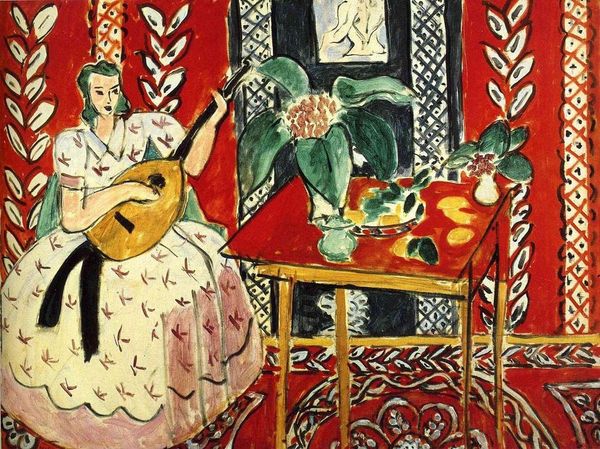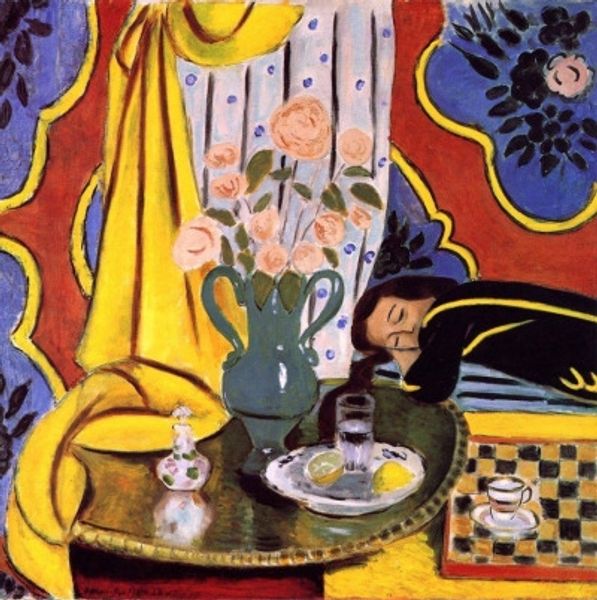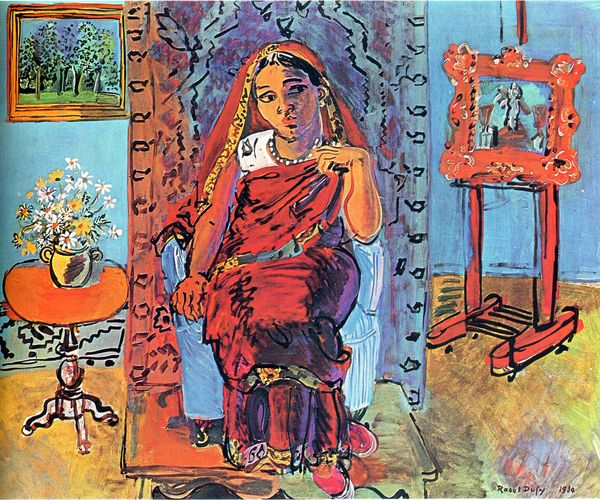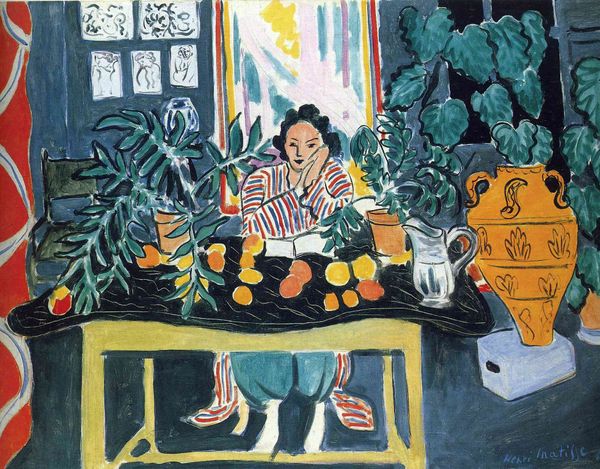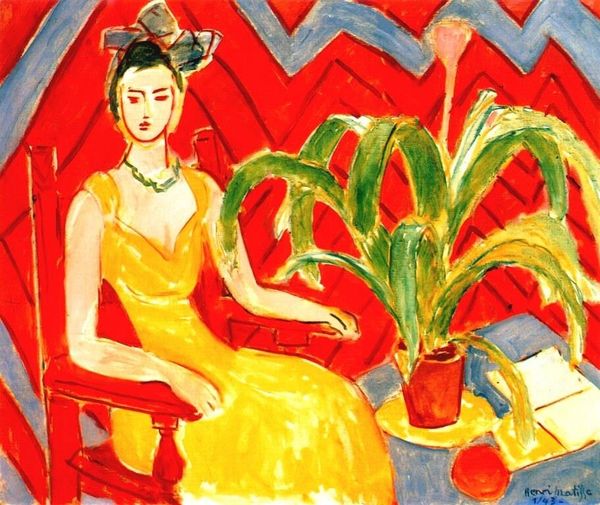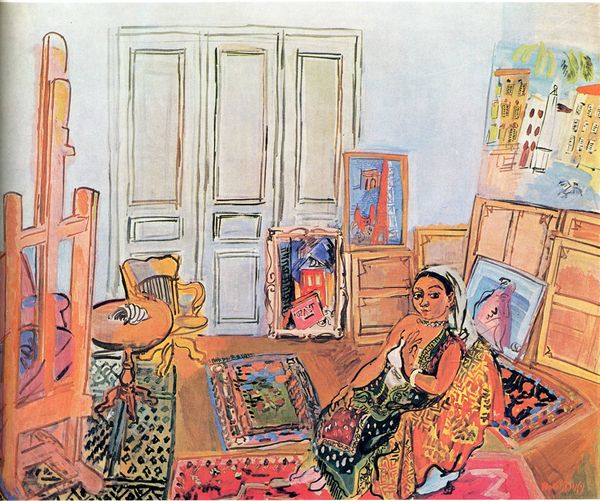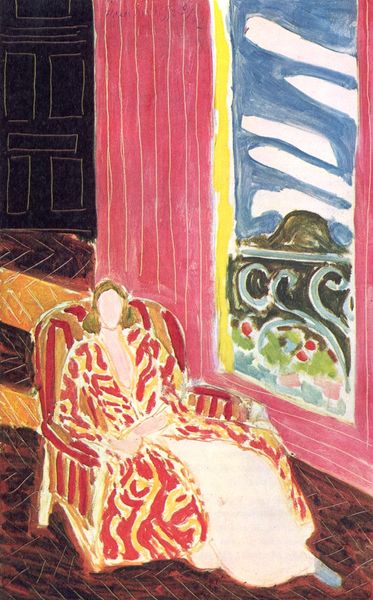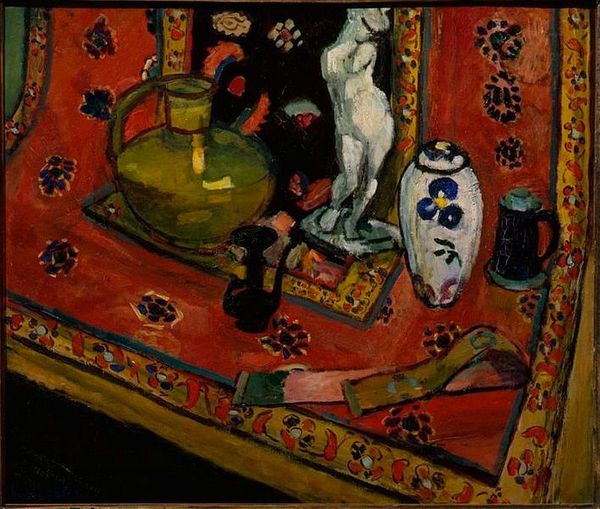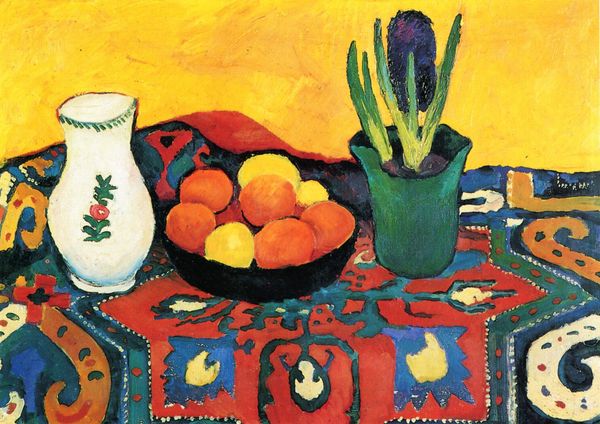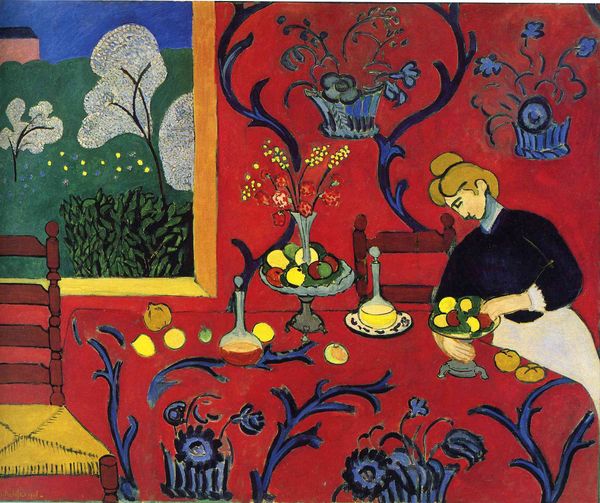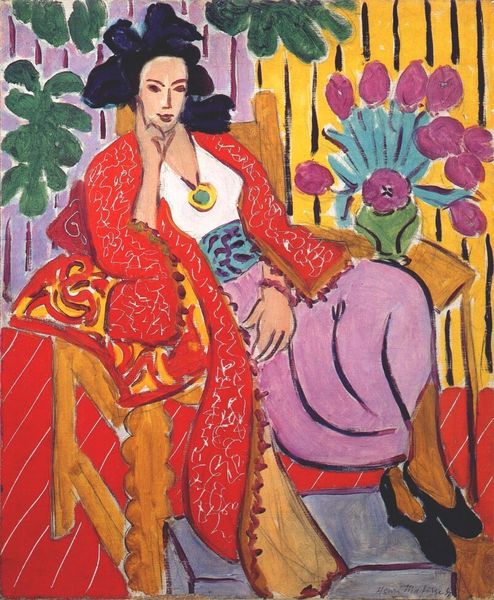
Copyright: Henri Matisse,Fair Use
Editor: This is Henri Matisse’s "Le Tabac Royal," created in 1943 using oil paint. There is something so intimate about this piece - you can almost smell the tobacco. How do you read the still life in terms of material culture? Curator: I'm struck by the seemingly careless inclusion of “Le Tabac Royal” – is Matisse commenting on commodity fetishism through such overt display, even in wartime? Note the layering of the production: raw material becomes processed good, then high art. Editor: I see what you mean. So, the painting isn't just a portrait but a study of the materials that construct everyday life? What about the labor involved in the weaving and the chair making? Is he pointing to social structures embedded in materials? Curator: Precisely! Consider the juxtaposition: a faceless model and her ornate chair become objects themselves. It really does blur the boundaries between human and material production. But is the seeming detachment or even critique, complicit with that production through consumption of luxury goods like the chair and “Le Tabac Royal”? Editor: Interesting. He doesn’t quite resolve that tension, does he? He throws all these raw and treated elements together and the viewers have to make their own choice. Curator: Exactly. We're left to question our relationship with production, labor and objects during conflict and beyond. Art here, prompts uncomfortable material realities. Editor: It’s more than just Fauvism and modernism, really! Thanks for pulling out how Matisse made the social process the subject itself. Curator: It makes you appreciate the loadedness of a ‘simple’ painting like this, doesn't it? It makes me wonder what other everyday encounters should provoke these deeper questions.
Comments
No comments
Be the first to comment and join the conversation on the ultimate creative platform.
